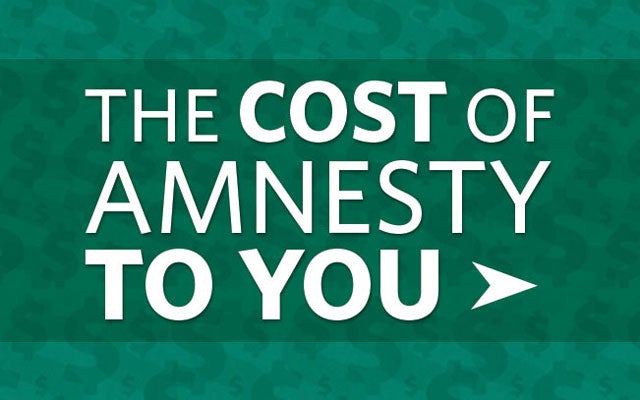The Institute on Taxation and Economic Policy (ITEP) released a report today calculating “Undocumented Immigrants’ State and Local Tax Contributions.”
It concludes that “the 11.2 million undocumented immigrants living in the United States are already paying a significant share of their income in state and local taxes, and that figure would rise under immigration reform.”
While it is true unlawful immigrants do pay significant taxes, the finding ignores increased outlays (benefits and services) under amnesty, which would increase even more than taxes paid, leaving governments with the choice of higher taxes or more borrowing.
Heritage released the most comprehensive look at the fiscal costs of illegal immigration at the state, local, and federal levels, examining more than 30 taxes and 70 expenditure categories. The net result—calculating all the taxes paid and all the benefits and services received over the lifetime of currently illegal immigrants—was trillions of dollars.
Our report concluded that under amnesty, during what we called the “interim phase” (the first 13 years) and the full amnesty period, taxes paid by currently illegal immigrants would increase: “During the interim phase, tax revenues would go up as more former unlawful immigrants began to work ‘on the books.’” Taxes paid to state and local government per household would go from $5,101 (current law) to $6,077 (interim phase) and then to $6,135 (full implementation), as shown in Table 7 in the report.
Some seem to think that ITEP’s findings provide some kind of new selling factor for immigration reform supporters and that this constitutes “big money for state and local governments.” The only problem is that the report says absolutely nothing about the costs (expenditures) to state and local governments (not to mention massive costs to the federal taxpayer).
In contrast, our report estimates that during the interim phase, population-based services—nearly all of which are provided by state and local governments—would increase by about $2,000 per household, and direct benefits would increase by about $1,000. (See page 25 of the Heritage report.) The earned income tax credit itself, payable during even the interim phase, would cost federal taxpayers some $10 billion a year. After full implementation of amnesty, direct benefits would double per household to more than $2,200; means-tested benefits (like welfare) would increase some $10,000 per household to $14,263; population-based services would go up by another $2,000; and Obamacare alone would cost on average $6,342. (See Table 7.)
These facts demonstrate that the increase in tax revenue is irrelevant if it is swamped by increased costs to government that have to be made up by borrowing or higher taxes.
